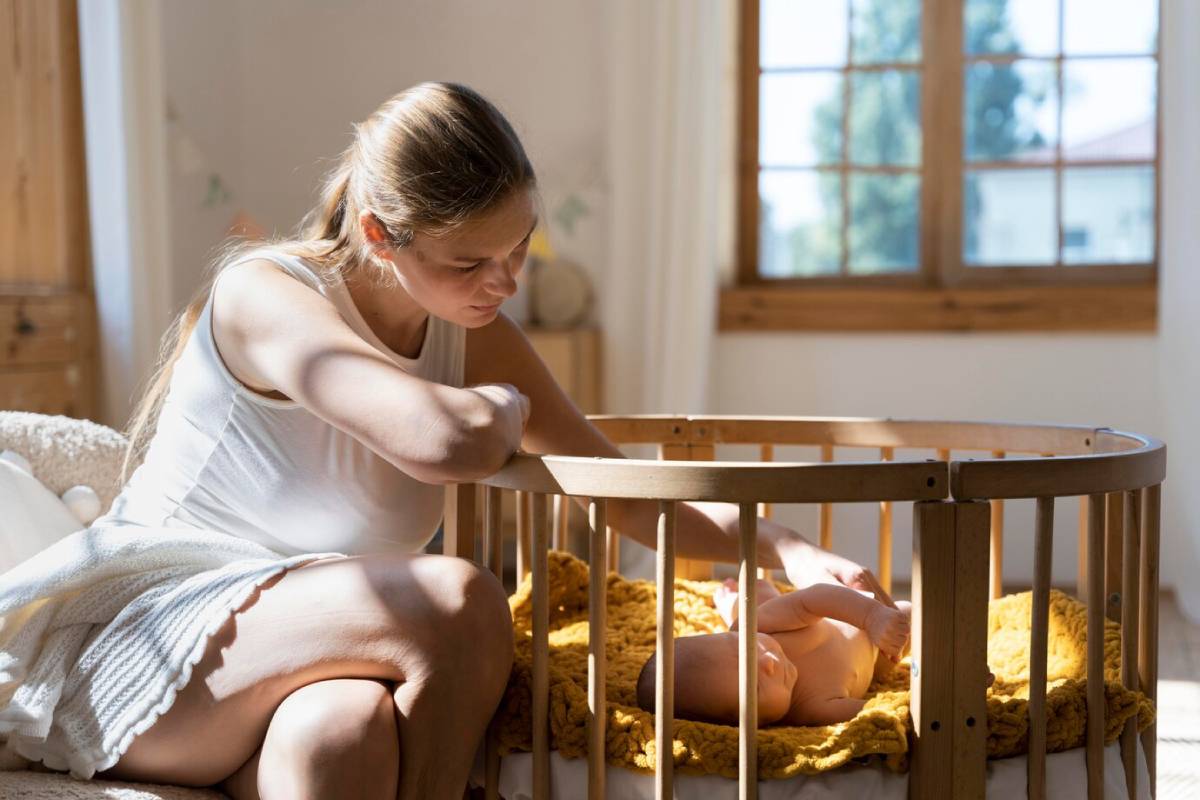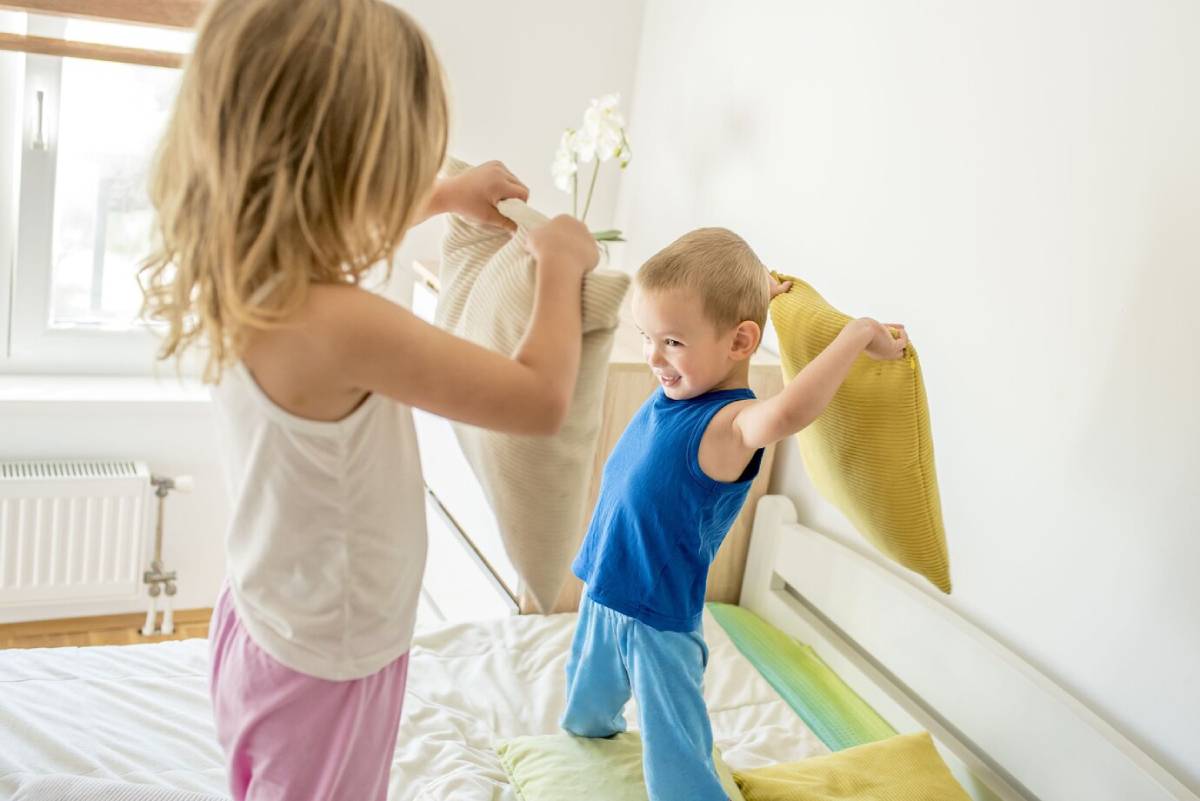
How to Transition from Crib to Toddler Bed Safely
Transitioning your toddler from a crib to a bed is a major milestone. It’s a signal that your child is maturing and growing more independent. However, this change can also lead to new challenges. For some kids, the adjustment is quick. That’s why it’s crucial to plan the crib-to-bed transition in advance.
In this blog, we’ll cover some helpful advice, toddler bed safety tips, as well as ways to make moving toddlers to bed an easy and safe experience.
Pro Tip: Introduce the new bed gradually. Let your toddler play or read in it during the day before their first overnight. This makes the bed feel familiar and less intimidating when bedtime comes.
Quick Guide: Making the Crib-to-Bed Switch Smoothly
- Look for readiness signs like climbing out, potty training, or asking for a big kid bed
- Choose a safe bed – low to the ground, with guardrails if needed
- Maintain the bedtime routine your toddler is used to
- Create a safe sleep space – anchor furniture, use a nightlight, clear the floor
- Start with naps if your child seems unsure
- Stay calm and consistent when they get out of bed
- Celebrate little wins to build confidence and excitement
Important Tip: Avoid making the transition during a stressful time, such as a move, starting daycare, or a new sibling arriving. Wait until your child feels secure and life is stable, so they’re more likely to accept the change smoothly.
When Is the Right Time to Make the Switch?
Watch for the Signs
There’s no perfect age for the crib-to-bed transition. Most toddlers make the move between 18 months and 3 years old. Here are a few signs that your child might be ready:
- They’re climbing out of the crib.
- They ask for a “big kid bed.”
- They’re potty training and need easy access to the bathroom.
- They’ve outgrown their crib.
If your toddler is showing any of these signs, it might be time to start planning the move.
Don’t Rush It
It’s okay if your toddler isn’t ready yet. Some kids feel safe in their cribs and may need more time. If your child is going through other changes, like starting daycare or welcoming a new sibling, it’s best to wait. A smooth crib-to-bed transition happens when your toddler feels secure and calm.
How to Prepare for the Transition?
Choose the Right Bed
Keep reading to find out how to choose the best toddler bed. Some resemble cribs without the sides; others look a bit more like regular beds. A twin bed with guardrails is also an option. We should choose a model with a low bed, not a flimsy bed.
If you can, involve your toddler in choosing the bed or bedding. It gives them a sense of control and excitement.
Keep the Same Mattress
If your toddler was attached to their crib mattress, you can use it in the new bed if it fits. This familiar feeling can help make the change easier.
Set Up a Safe Sleep Area

This is why toddler bed safety tips are very important at this stage. Here’s how to ensure sleeping areas are safe:
- Install guardrails to safeguard against falls.
- Take away heavy toys or pillows from the bed.
- Avoid cords, curtains, and furniture near the bed.
- If your child tends to wander, use a baby gate at the door.
How to Make the Transition Easier
Talk About It
Before moving the toddler to bed, talk to them about what’s happening. Use simple, positive words like, “You’re growing up and get to sleep in a big kid bed now!” Read books about the crib-to-bed transition to help them understand.
Stick to a Bedtime Routine
A consistent bedtime routine helps toddlers feel calm and safe. This might include:
- A warm bath
- Pajamas
- Brushing teeth
- Storytime
- Saying goodnight
If your toddler already has a routine, don’t change it too much. Keeping familiar steps helps make the new bed feel normal.
Start With Naps
If your toddler seems nervous, start by using the new bed for naps only. Once they’re used to that, move on to overnight sleep. This slow change gives them time to adjust.
Dealing With Common Challenges
Your Toddler Keeps Getting Out of Bed
This is a common issue after the crib-to-bed transition. Your toddler has new freedom and may want to test it. Here’s what you can do:
- Calmly guide them back to bed each time.
- Don’t give in to long talks or playtime.
- Keep the response boring and short.
Be patient—it might take a few nights, but your child will learn the new rules.
Trouble Falling Asleep
Sometimes, moving a toddler to bed causes sleep troubles. Try:
- Playing soft music or using a white noise machine.
- Offering a comfort item like a favourite stuffed animal.
- Make sure the room is dark and quiet.
If your child wakes up during the night, stay calm and use gentle reminders that it’s time to sleep.
Creating a Safe and Cosy Sleep Space
Toddler Bed Safety Tips to Follow
Keeping your child safe is the most important part of the crib-to-bed transition. Here are more toddler bed safety tips to help:
- Anchor heavy furniture to the wall.
- Cover electrical outlets.
- Keep floors clear of toys to avoid tripping.
- Use a nightlight if your child is afraid of the dark.
Let Them Feel Involved
Letting your child help set up their new bed can ease fears. Ask them to choose sheets or pick where their stuffed animals should go. Feeling part of the change helps them feel secure.
What Not to Do During the Transition?
Don’t Punish for Leaving the Bed
It’s tempting to get upset if your toddler keeps leaving their bed. But this can make things worse. Stay calm, consistent, and firm. Praise your child when they stay in bed all night.
Don’t Change Too Many Things at Once
Keep other parts of your toddler’s life stable. Avoid introducing the new bed during other big changes like moving houses, potty training, or starting preschool.
Celebrate the Big Move
Make It Fun
Celebrate this big step! You could have a “big kid bed” party or give your child a small reward for sleeping in their bed all night. Positive attention helps them feel proud and excited.
Praise and Encouragement
Praise goes a long way. Say things like, “I’m so proud of you for sleeping in your bed!” or “You did such a great job last night.” These little moments build your child’s confidence.
Toddler Sleep and Development
Why Sleep Matters?
Sleep helps your toddler grow, learn, and stay healthy. A good night’s sleep makes them happier and more ready to explore the world. That’s why the crib-to-bed transition is so important, it helps them learn how to sleep well in a safe, new space.
When to Ask for Help
If your toddler is struggling with sleep after several weeks, talk to your paediatrician. Sometimes sleep problems are caused by fears, anxiety, or other issues that need extra support.
Frequently Asked Questions
How do I know my child is ready to move from crib to bed?
If your child is climbing out of the crib, asking for a big kid bed, potty training, or has outgrown the crib, it might be time. Most toddlers make the crib-to-bed transition between 18 months and 3 years old.
How can I make sure my toddler’s new bed is safe?
Follow toddler bed safety tips like using guardrails, anchoring furniture, and clearing the area around the bed. Keep cords, toys, and sharp objects out of reach.
What if my toddler keeps getting out of bed?
Stay calm and gently walk them back to bed each time. Avoid turning it into playtime or a long talk. Keep it quiet, short, and boring so they learn that bedtime means sleep.
Should I switch to a toddler bed or a twin bed?
Either one works! Toddler beds are smaller and feel more like cribs, which some kids prefer. Twin beds last longer, especially with safety rails. Pick what feels best for your child.
Can I move my toddler to a bed during a big life change?
It’s best to avoid moving toddler to bed during stressful times like a new sibling, starting daycare, or moving houses. Wait until things feel calm and stable so your child can adjust more easily.
Moving Your Toddler to a Bed

The transition from crib to bed is a major milestone in your toddler’s life. For both of you, it can be a fun, scary, sad, and exciting transition! But love, patience and planning can make the transition to a toddler bed as smooth and positive as possible.
Keep in mind that all children are unique. Some will leap into their new bed with joy, and others may need a few extra hugs and reassurance. Continue with routines, remain calm, and celebrate every tiny win. You’ve got this.